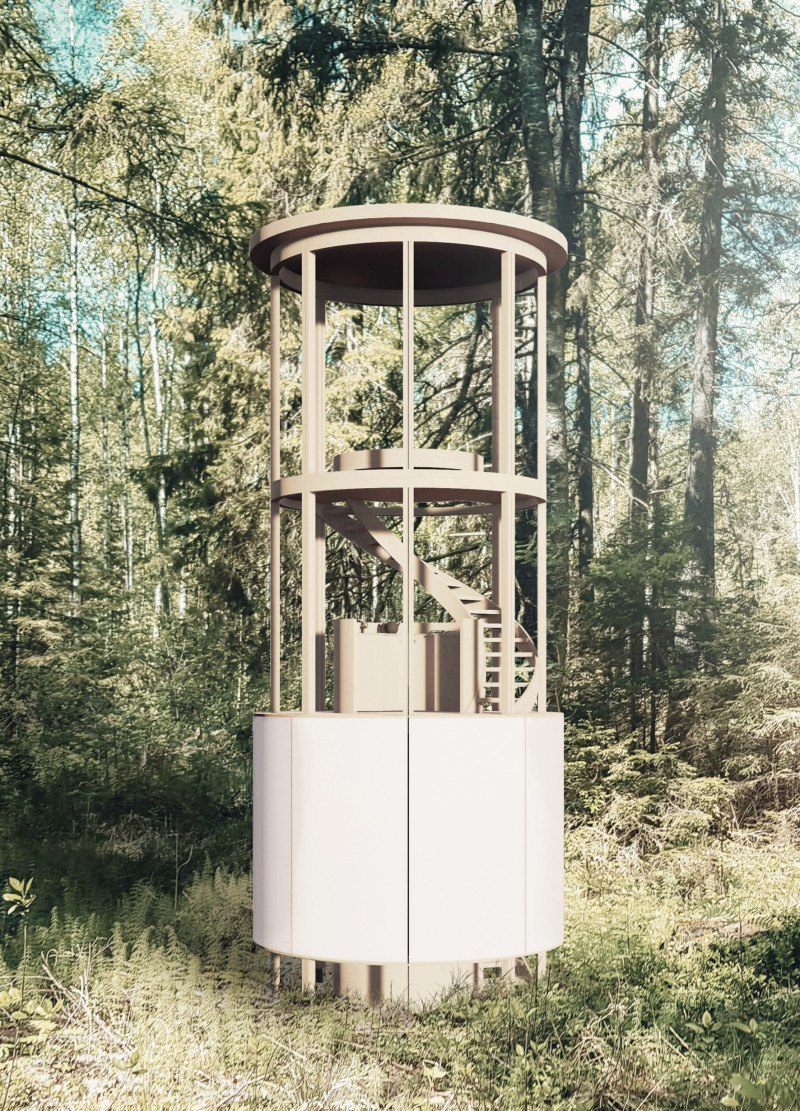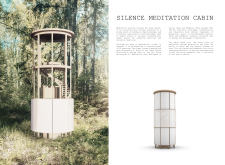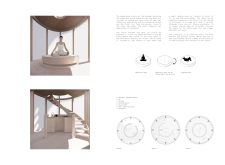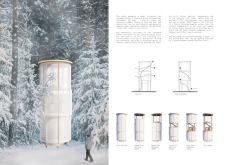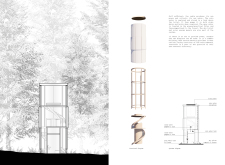5 key facts about this project
The silence meditation cabin combines thoughtful design with a focus on meditation practices, creating a peaceful retreat. Located in a natural setting, it serves as a space for introspection and connection to the environment. Drawing inspiration from meditation traditions, including influences from India, Taoism, and Buddhism, the cabin encourages a sense of calm and self-discovery through its architecture.
Architectural Form and Movement
The cabin features a design that guides occupants upward as they enter, symbolizing a journey from the outside world into a devoted space for contemplation. This gradual movement deepens the meditative experience, allowing users to engage with their surroundings on multiple levels. The raised structure limits contact with the ground, helping to protect local plants and wildlife while reinforcing the relationship between the cabin and nature.
Adaptability and User Experience
Flexibility is a key characteristic of the cabin's design, as the upper sections can be opened to allow fresh air and views or closed for moments of solitude. This adaptability gives occupants the choice between retreating into their own space or embracing the outdoors. Centrally located, the kitchen and dining area foster a communal atmosphere while also accommodating individual meditation practices.
Materiality and Aesthetic
The choice of materials is essential in creating a soothing environment. The cabin uses a combination of white surfaces and natural wood, particularly Norway spruce timber, to achieve a sense of brightness and warmth. This careful selection encourages an ongoing connection between interior spaces and the natural world outside, making the experience more engaging.
Sustainability and Functionality
Sustainability is integrated throughout the cabin’s design. Operable panels provide control over airflow and natural light, assisting in passive heating and cooling. This approach helps maintain comfort without relying heavily on energy sources. Additionally, the cabin incorporates a rainwater collection system and treats greywater, allowing for self-sufficiency.
Dry toilets further minimize environmental impact, supporting a commitment to ecological practices. Every design detail, from efficient structure to the warmth of the materials, supports the idea of a space dedicated to meditation, inviting users to connect deeply with themselves and their surroundings.


